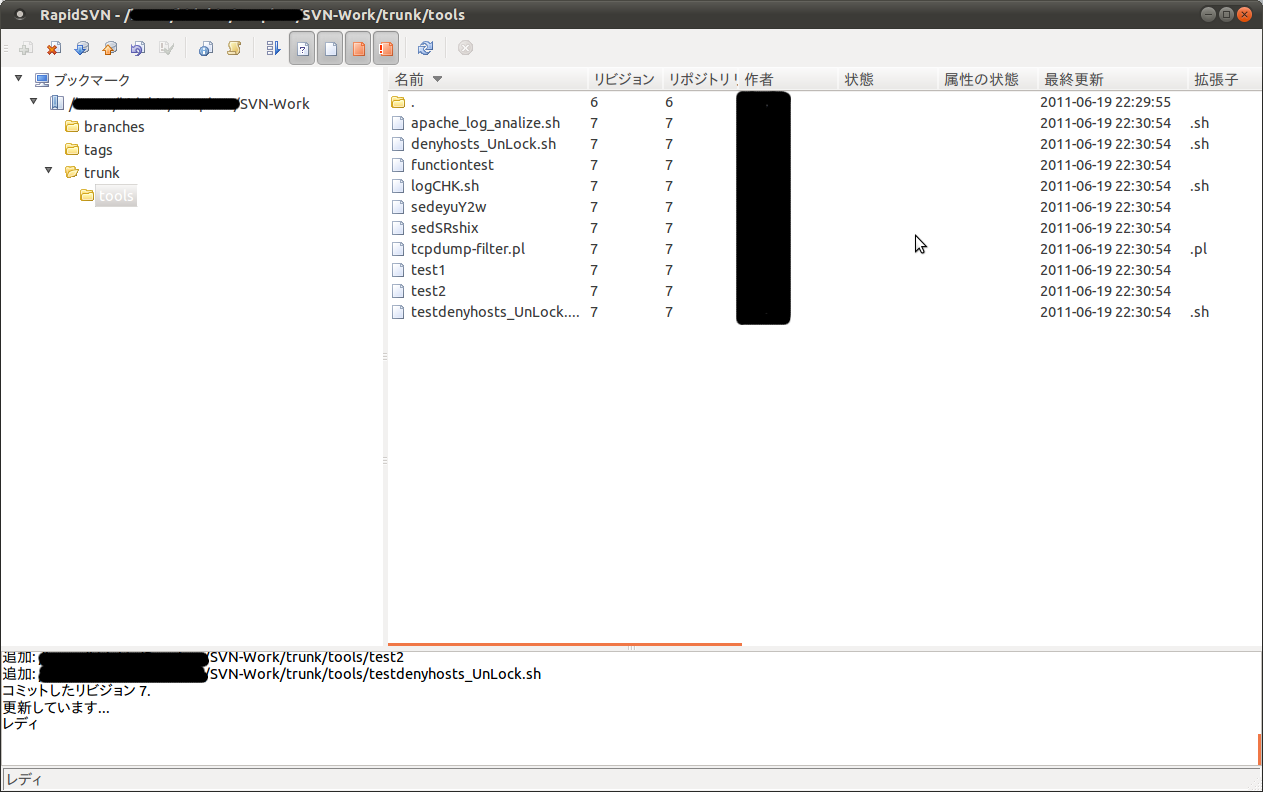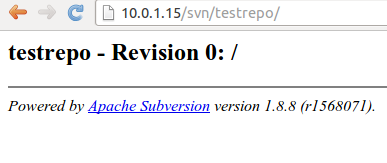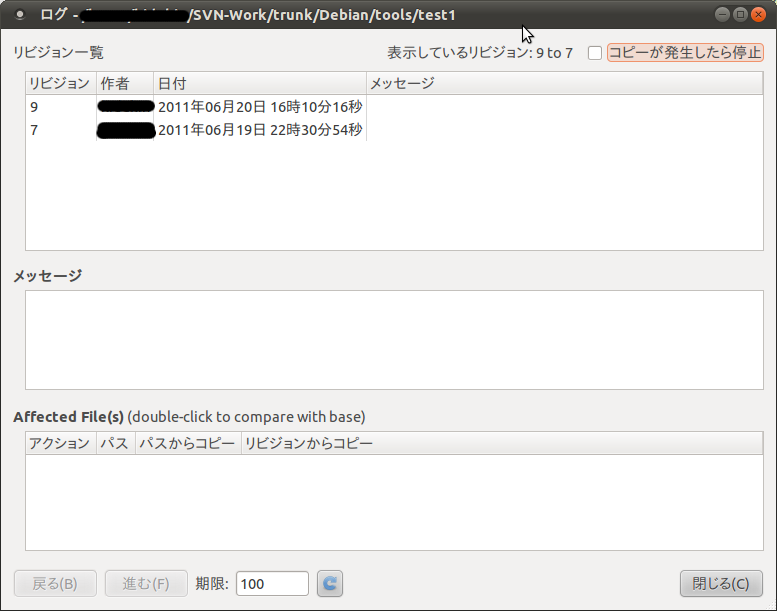

- #Ubuntu rapidsvn install#
- #Ubuntu rapidsvn update#
- #Ubuntu rapidsvn code#
- #Ubuntu rapidsvn password#
Follow the provided instructions to install and configure it: Its usage is very simple, you should create a repository manually (svn create on command line), create a working project directory (mkdir projectname), import it to svn (svn import on command line) and after it you could import both repository and working copy to your RapidSVN.Īlmost finishing this post I found an interesting tutorial of Department of Electronic System of Denmark, which presents a very simple way to interact with SVN with nautilus context menu on Ubuntu. It consists of a front end tool to manage subversion, which allows to commit an entire directory: I’m not sure if it is possible to make a commit without add each directory manually, which could least some time.

This case study explains most of the svn concepts. home/user/temp# svn checkout file:///tmp/repositorios/HelloWord/trunk. # now suppose that this repository is hosted on a server you could make a checkout from other host: tmp/HelloWorld# svn copy file:///tmp/repositorios/HelloWord/trunk/ file:///tmp/repositorios/HelloWord/tags/versao1.0 -m "Launch version 1.0" # launches the first version (1.0) and list tag repository directory again: tmp/HelloWorld# svn list file:///tmp/repositorios/HelloWord/trunk/ tmp/HelloWorld# svn list file:///tmp/repositorios/HelloWord/tags/ # list the content of the tag and trunk repository directory tmp/HelloWorld# svn commit -m "user.php recovered" tmp/HelloWorld# svn copy -r4 file:///tmp/repository/HelloWorld/trunk/cpanel/user.php cpanel not found error, but I'll follow with the case study): # copy file from repository revistion 4 to current version (doesn't work here. # came back to the current repository revistion (#5): # roll back to the repository revision 4: tmp/HelloWorld# svn commit -m "- user.php" tmp/HelloWorld# svn delete cpanel/user.php # delete the file user.php on the repository:

#Ubuntu rapidsvn update#
# update to the previous svn commited version (it will bring user.php back): # remove "accidentally" a file and check the svn status: tmp/HelloWorld# svn commit -m "+ modulo usuario" tmp/HelloWorld# echo "" > cpanel/user.php # add a file to this new directory, check svn status, add the file to svn and commit: tmp/HelloWorld# svn commit -m "+ Diretorio cpanel" tmp/HelloWorld/cpanel# echo "" > cpanel.php # create a directory, write a file on it, add it to svn and commit: tmp/HelloWorld# svn commit -m "index.php modificado" # add a line to file in your working copy, check out the svn status and make a commit tmp/HelloWorld# svn checkout file:///tmp/repository/HelloWorld/trunk. # delete your working project and checkout a working copy from the repository tmp/HelloWorld# ls -lh /tmp/repository/HelloWord/ file:///tmp/repository/HelloWorld/ -m "Importacao Inicial" # import your working project directory to svn (carefull with the three slashes): tmp/HelloWorld/trunk# echo "" > index.php # create a project directory with the standard directory structure: tmp/repository# svnadmin create HelloWorld So let’s show a simple case study presented in SVN command line Ultimolog blog (portuguese). tags: store the stable versions of the project, such as 1.0, 2.0.branchs: used to make a test on the current project without corrupt the current version.trunk: the current version of the working project.working copy: the current version of the project, a repository copy with some changes.

#Ubuntu rapidsvn code#
Despite it be more used to code versioning, it can be applied to any file type. It maintain the current and historical versions. You can mention the commit message with a flag -m.Trying to clean up the mess I test some linux tools to help versioning, instead of renaming files with intuitive names like v1, v2, final-v1 and so. svn add checkout1.txt checkout2.txtĬommit the added files. cd checkout/Īdd those created files for committing. Install Apache SVN (Subversion) on Debian 9 – Subversion CheckOutĬreate test files for committing on the testrepo repository.
#Ubuntu rapidsvn password#
Store password unencrypted (yes/no)? yes <- Store Password Of the 'store-plaintext-passwords' option to either 'yes' or 'no' in You can avoid future appearances of this warning by setting the value Your system so that Subversion can store passwords encrypted, if Password for 'raj': **** Subversion RepositoryĬan only be stored to disk unencrypted! You are advised to configure Authentication realm: Subversion Repository Install Apache SVN (Subversion) on Debian 9 – Subversion RevisionĬreate a directory called “checkout” mkdir checkoutĬheck out the files contained within the repository to the testing directory. Upon successful login, the content will be listed like below. Install Apache SVN (Subversion) on Debian 9 – Subversion Authentication You will be asked to enter the username and password.


 0 kommentar(er)
0 kommentar(er)
